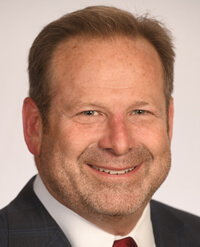
Dozens of times per week, clients ask me or my staff questions that could be easily answered with an immediate no. In addition, most of these questions are asked over email and text, and we often respond to them on a smartphone. So, if we think the answer to their question is no, then it is tempting to quickly respond “no” and move on to the next thing.
But there is no benefit to me or the client to answer with a quick no. Don’t get me wrong — it is easier, but it’s a lost opportunity. Instead of saying a quick no, try saying, “I’m not 100 percent sure, but I will research it and get right back to you.”
There are three benefits to this approach.
I don’t know about you, but my clients hate being told no, so even if we are only delaying the inevitable disappointment, that’s a good thing. Going above and beyond by researching something for clients builds rapport, whereas a quick no makes them think we are lazy or aren’t trying to help them.
Second, a quick no may be wrong. Sometimes things have changed, and there is a solution we could find if we researched the answer.
Last, and perhaps most important, often there is an issue or a question behind the question, and if we offer the quick no, we miss what the clients are really concerned about.
Let’s use an example. Imagine I am sitting in a hot car with 10 minutes until my next appointment, and I start checking 100 unopened emails on my iPhone to see what I can get rid of. A client emails and asks, “Can I get more life insurance without medical underwriting?” Remember: hot car, 99 more emails. The quick answer is usually no, and it’s tempting, but, instead, how about we say, “I am not 100 percent sure, but I will research it and get back to you”?
The best case is we find that the answer is yes, and that is much better than a quick no. Even if you are sure the answer is no, research the question!
Then we try to find the issue or question behind the question. In this example, what is the real issue? Why does the client want life insurance without medical underwriting? The literal question was about underwriting practices, but the question that matters is why the client is asking to begin with. The answer to this question is critically important, and I would have missed it with a quick no.
The answer to the issue behind the question is likely that the client’s health is failing. Maybe he or she could make a disability or a critical illness claim. Maybe the client has an additional purchase option on any of his or her individual life coverages. Maybe the client needs to review his or her beneficiary designations.
We would have missed giving all these important suggestions if we responded with a quick no. This is just one example, but this happens all the time.
Every time you are tempted to respond with a quick no to a client’s question, stop yourself. Be slow to say no; instead, try: “I am not 100 percent sure, but I will research it and get right back to you,” and see how much more value you deliver. And even if the answer is actually no, our clients will appreciate the effort a lot more than a quick no. Remember: Just say no … to no.

Brad Elman, CLU, ChSNC, is a 27-year MDRT member with 16 Court of the Table qualifications and one Top of the Table honor. Elman writes regularly for industry trade journals and his practice was featured in Kiplinger magazine and Morningstar Advisor. Additionally, he has made numerous television appearances on the NBC Bay Area News as a consumer finance guest. Elman has served as an MDRT Divisional Vice President three times and chaired eight MDRT committees.